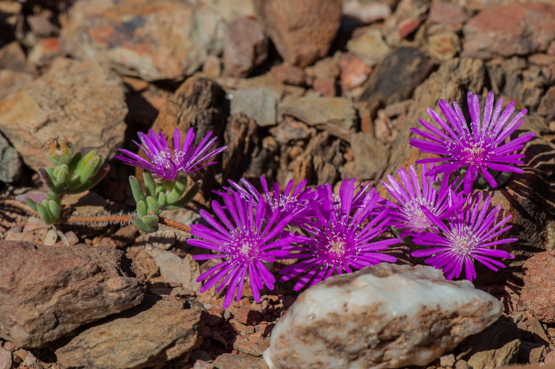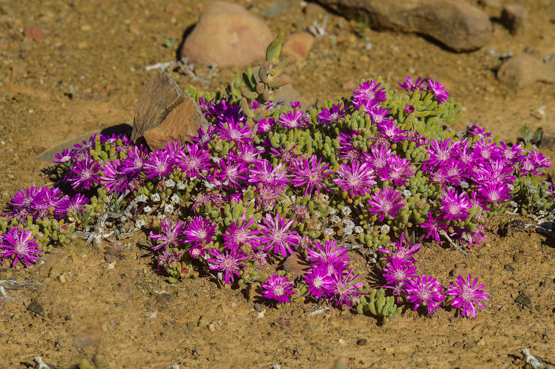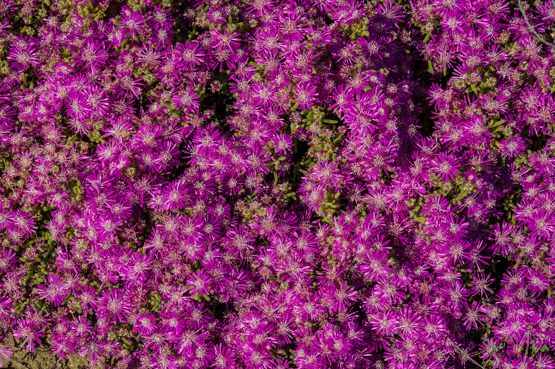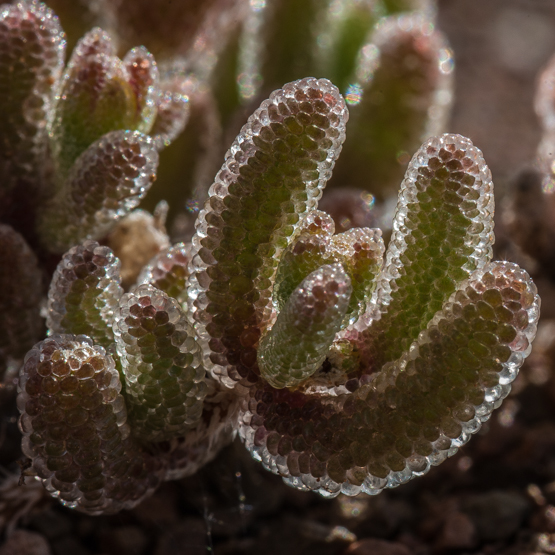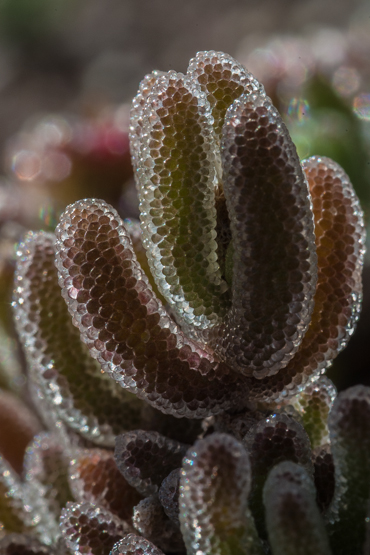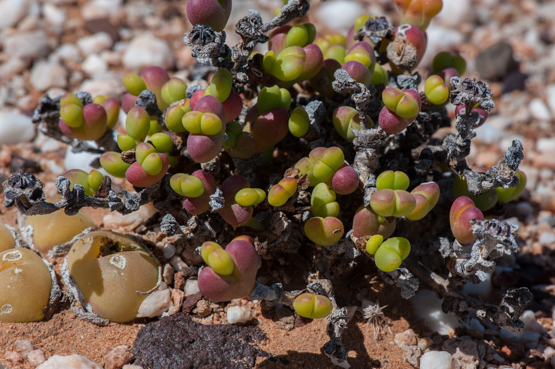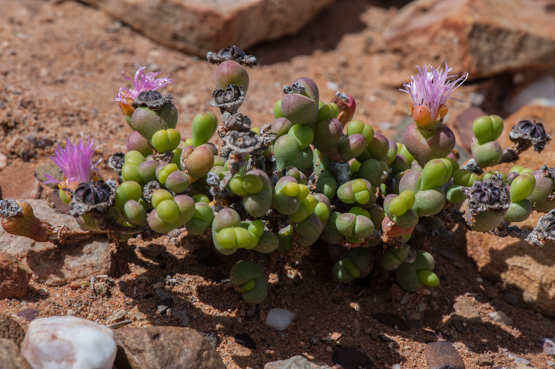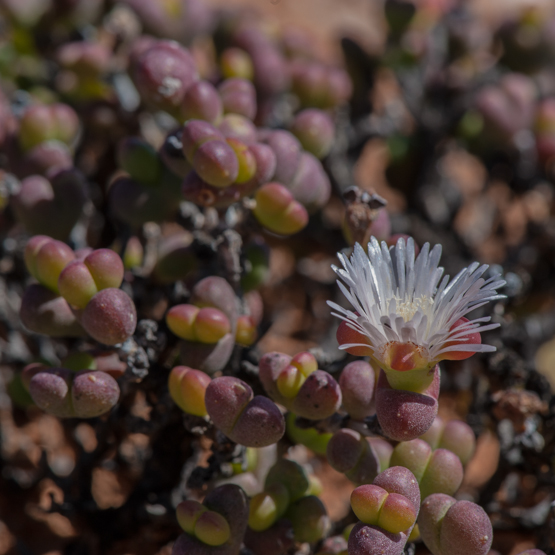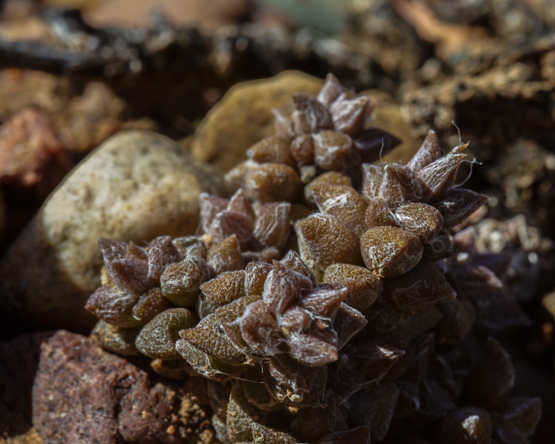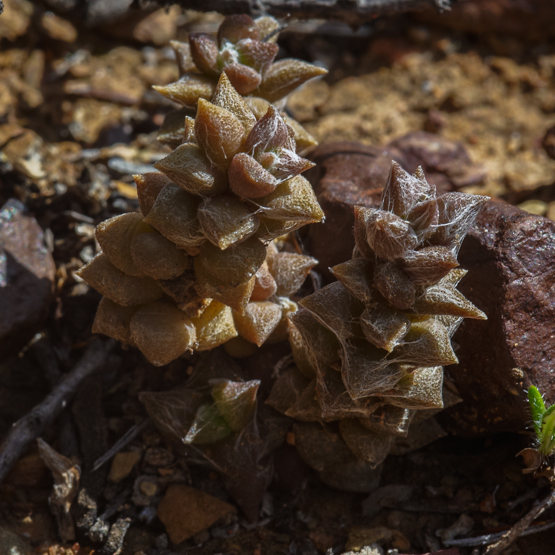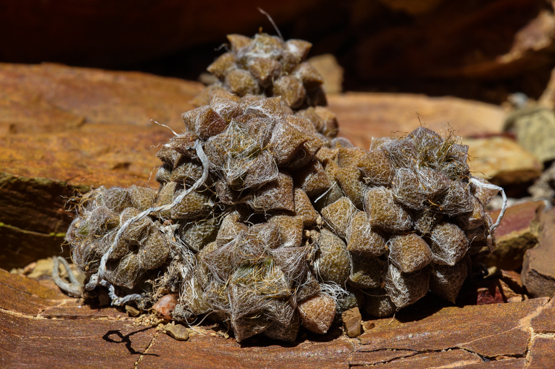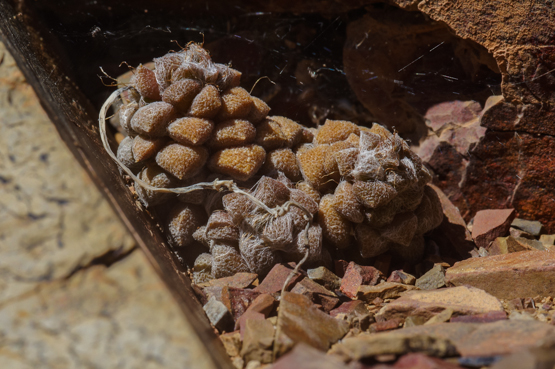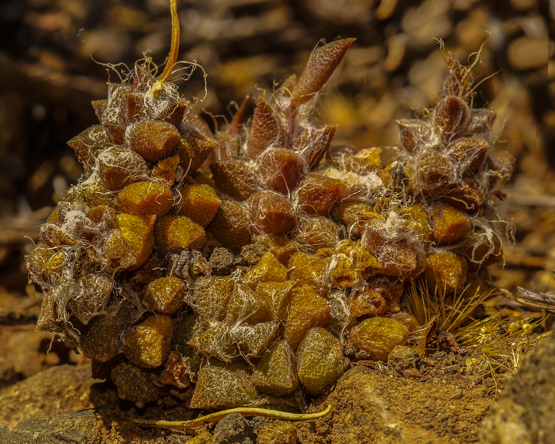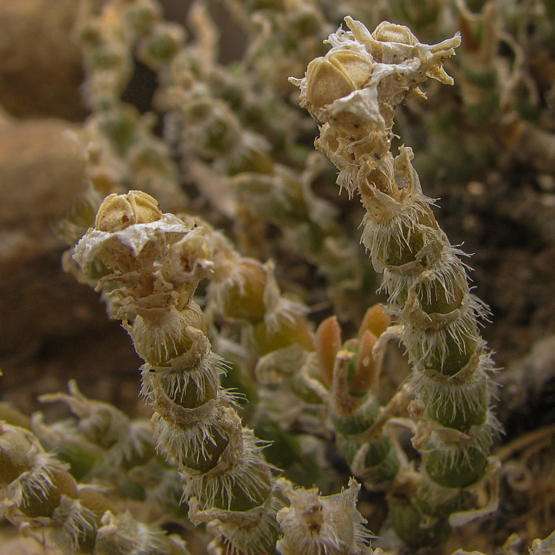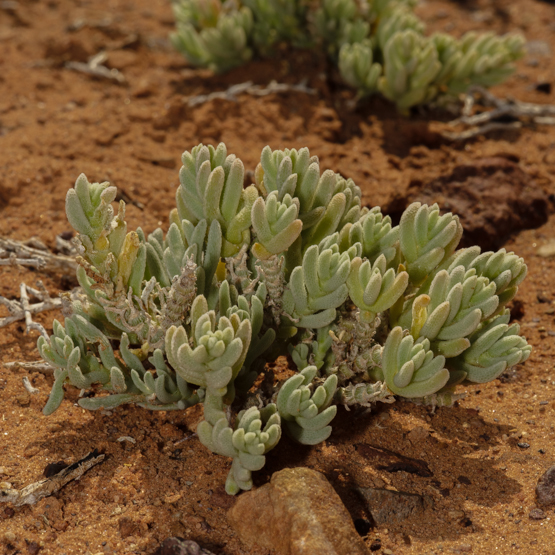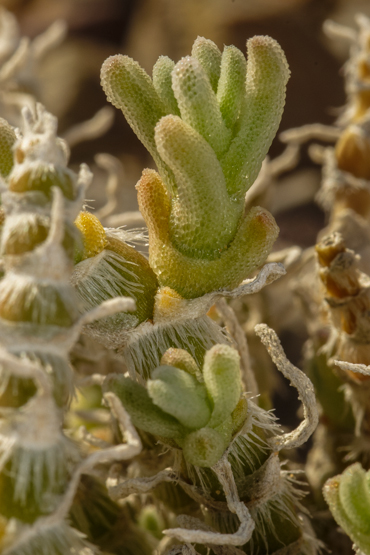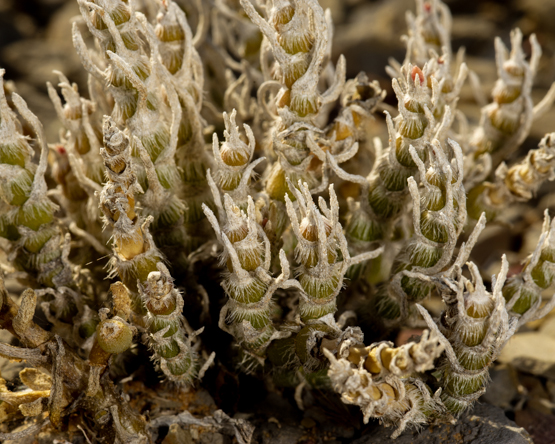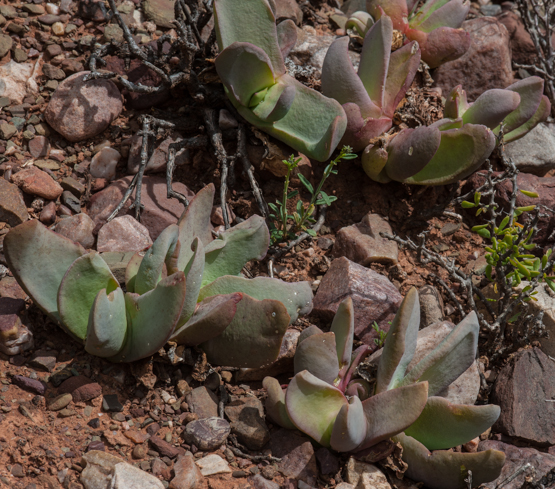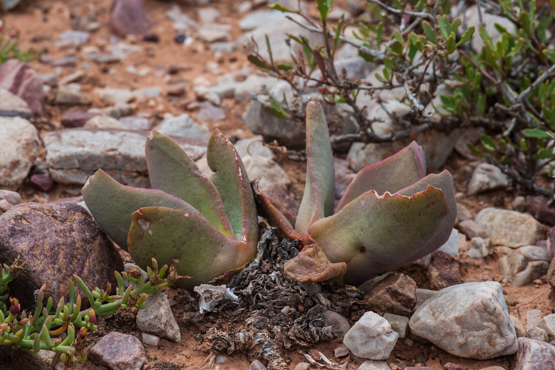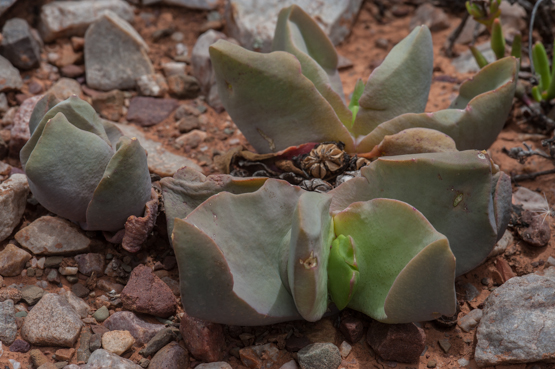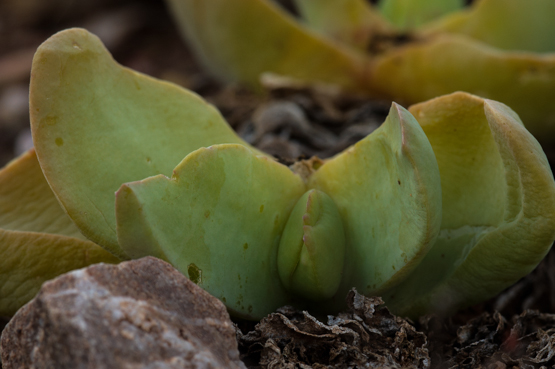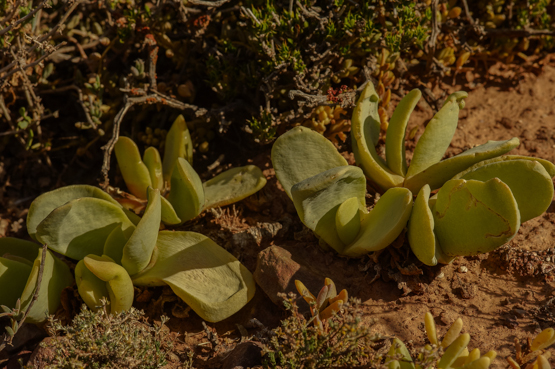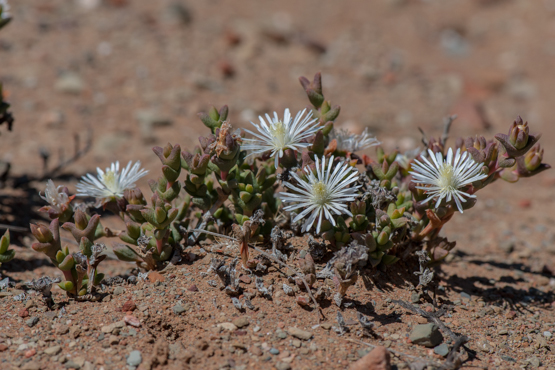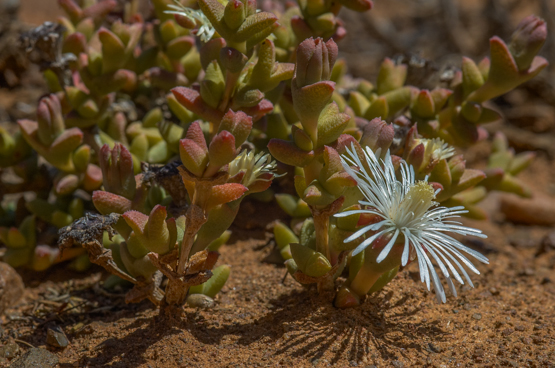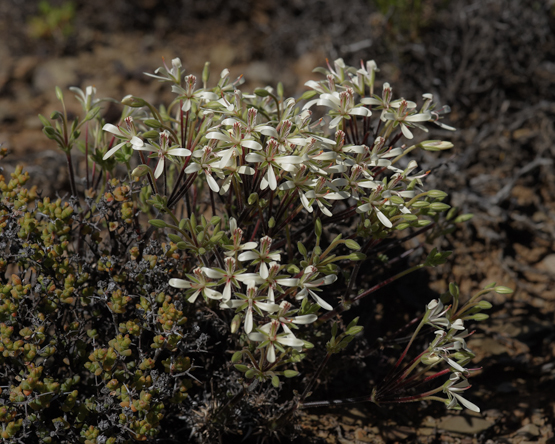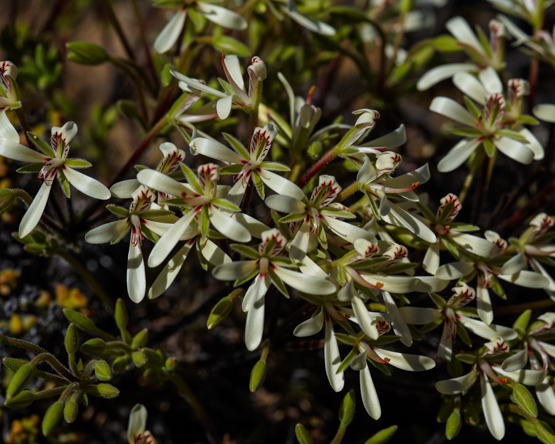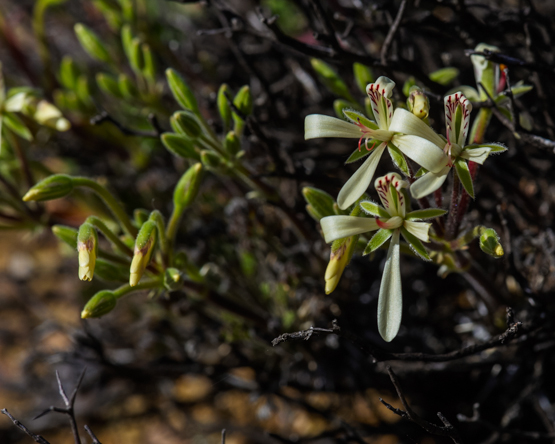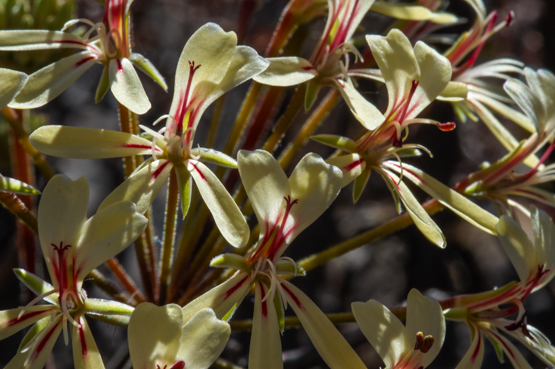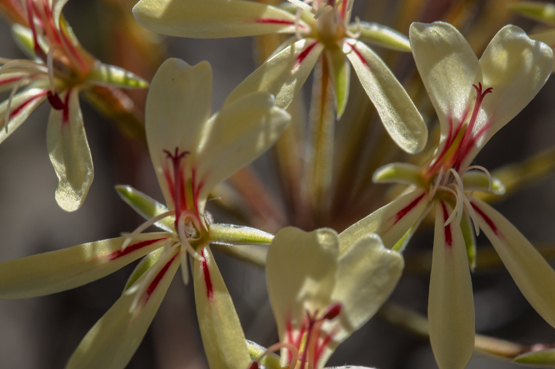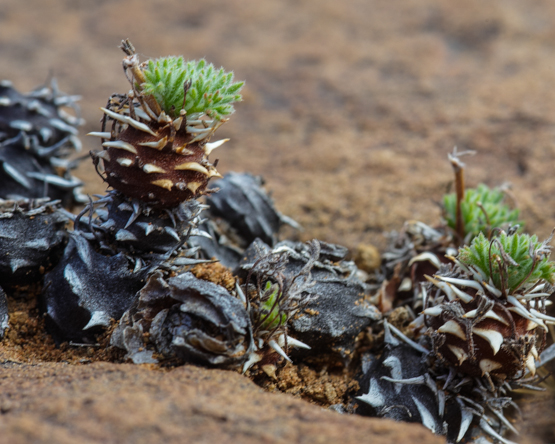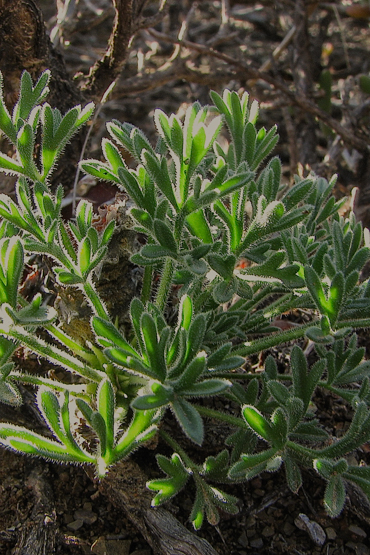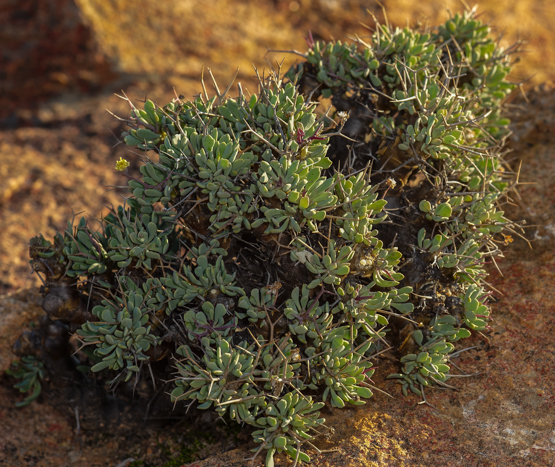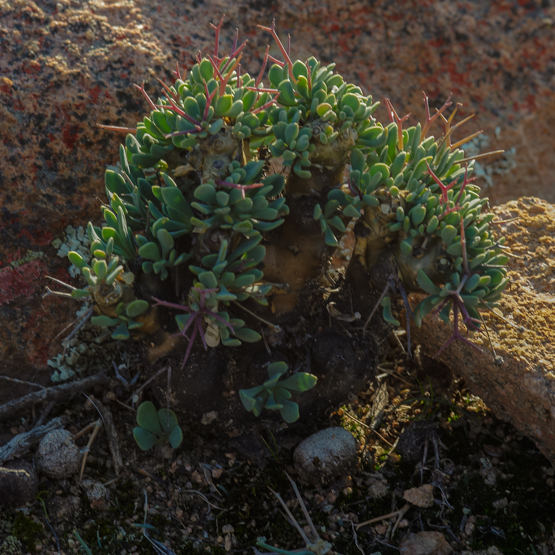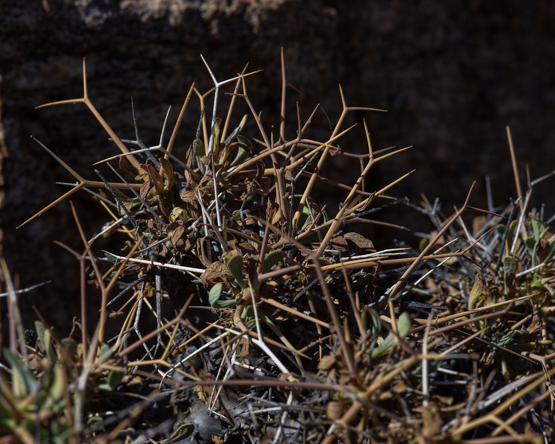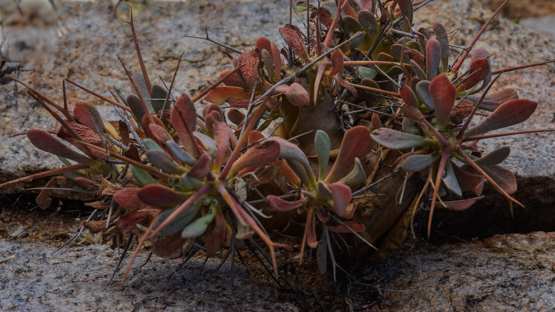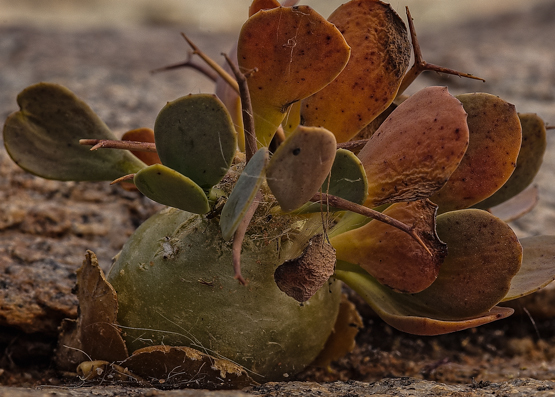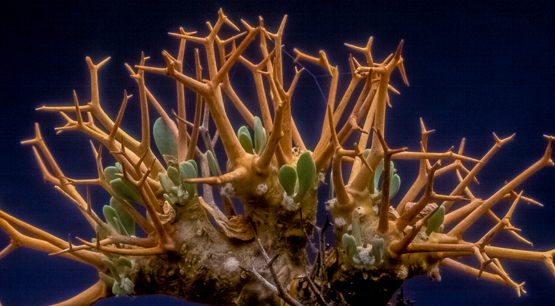From late Winter to early Summer one can find this species in flower in southern Namibia and many parts of South Africa. It is an important pioneer on disturbed soil, e.g. roadsides, forming mats of up to a meter across. For that reason it is also a good ground cover in suitable climates.
The hairy stems make it usually easy to recognize this plant. The beautiful bladder cells on the leaves are best admired in back light.
Month: December 2013
Octopoma quadrisepalum
Although this species and its sibling O. octojuge (see post 16 June this year) have the same general distribution area (Laingsburg, Ladismith and Swellendam), they never seem to grow together. It is a pity one does not see them in cultivation more often, as both are nice little shrubs (not more than 10 cm tall), with relatively big flowers. The photos were taken northeast of Montagu on the road to Anysberg on 30 October 2013. In the first picture you will also see Gibbaeum nuciforme.
Anacampseros arachnoides
It is easy to take this species for granted, even in spite of the cobwebby hairs it is decorated with.
The following is a quote from Gordon Rowley’s booklet ” Anacampseros, Avonia, Grahamia. A grower’s Handbook” :
“This attractive and distinctive species seeds itself freely around the glasshouse and has long been cherished or tolerated in collections of succulents. The abrupt tapering of the leaf to a spiny tip is its most distinctive feature”
This sounds to me like a nice example of damning with faint praise.
When one inspects the plants a bit closer, the beautiful, almost reptile-like surface texture of the leaves is revealed. I must confess that since I have discovered this characteristic, I look at these plants with renewed respect.
Brownanthus ciliatus ssp. ciliatus
Together with the other members of the genus this is among the few stem succulents in the family. The short-lived leaves are provided at their base with a fringe of long hairs (cilia = lash).
The plants occur from Calvinia in the north to Ceres in the southwest and Willowmore in the southeast, usually as pioneers on dry flats and on roadsides.
The first picture was made in autumn (4 April 2007), the others in winter (early August to early September 2010).
Glottiphyllum linguiforme
Another peculiar name: both glottis and lingua mean tongue, phyllum = leaf and forme = yes, indeed. So, in other words: the tongue leaf with the tongue shape.
The plants occur in the Oudtshoorn-Calitzdorp area, where the rainfall is 100-200 mm per year. They usually grow under shrubs on loamy or sandy soil with some quartzite and flower in late autumn and winter (March-June).
Ruschia nana
Two months ago I found one specimen of an interesting miniature shrub on the road from Montagu to the southwest entrance of Anysberg Nature Reserve (see first picture). After some digging in the literature I found out that it was Ruschia nana (nana = dwarf). The combination of 6 rather than 5 calyx lobes and locules (compartments in the fruit) on the one hand and compact growth on the other, is apparently unusual.
When I had another look at the picture, it occurred to me that I had seen similar plants a few years before on the farm near Matjiesfontein. By road this is quite a distance, but as the crow flies it is not more than about 70 km.
The other two pictures give an impression of these plants (as it happens they were also taken in October). I am sure they belong to the same species.
Pelargonium hystrix (2)
Pelargonium hystrix (1)
Hystrix means porcupine in Greek and what a nice descriptive name that is for this plant. The stems are armed with spines, which in this case are in fact persistent stipules (outgrowths at the base of a leaf stalk).
The species occurs in the western part of the Karoo, from Calvinia in the north to Nougaspoort (halfway between Touwsrivier and Montagu) in the south. Usually the plants grow between and underneath bushes, sometimes in the open. The area receives mainly winter rain (100-200mm per year) and although it can become very hot in summer,
the winters are cool, usually with frost at night.
To be continued.
.
Othonna euphorbioides
The specific epithet means looking like a Euphorbia and refers to the spines, which in reality are persistent petioles (leaf stalks). The plants occur in Namaqualand, from Kamieskroon to Steinkopf and further west. Their typical habitat is cracks in granite outcrops.
The last two pictures were made in cultivation.
